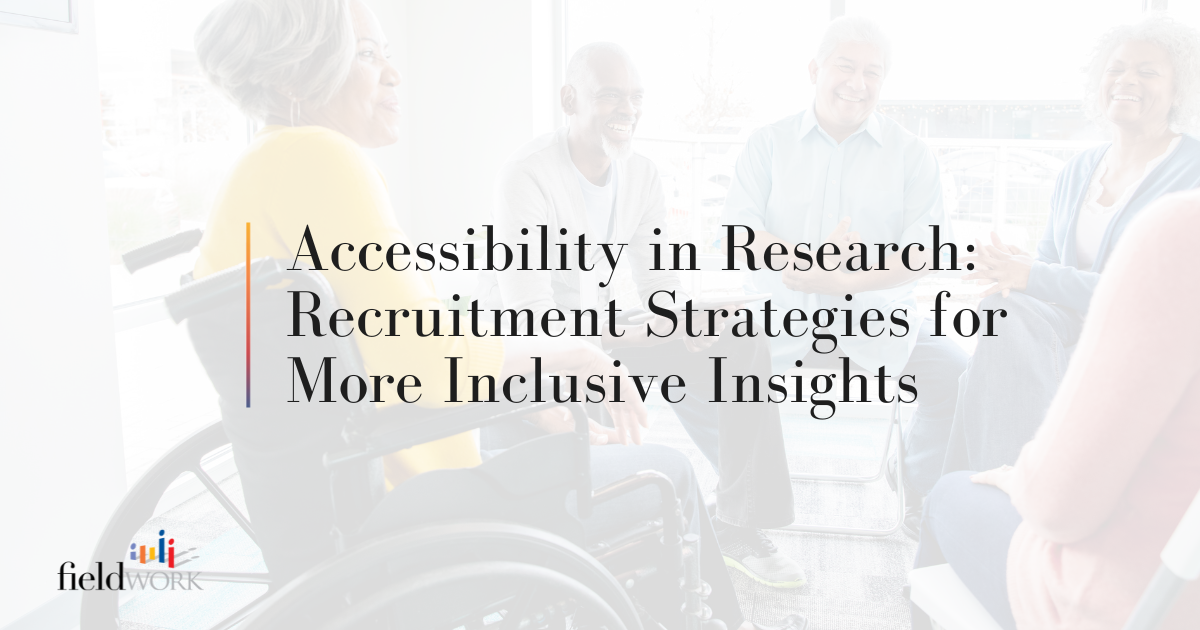Focus groups are a tried-and-true research methodology where respondent engagement is vital to gaining research insight. The moderators' expertise and experience are influential to the outcome of the research, and it’s always important to deliver high-quality results. This impacts not only the current project but further relationships and opportunities for partnership.
Market research experts Tricia Houston of MMR LIVE Experience Design, Katrina Noelle of KNow Research, Natalia Infante Caylor from Hola Insights, and Shelley Forrester of Forrester Network have provided their top tips for maximizing engagement and building rapport.Tip One: Plan for Different Engagement Styles
As a moderator, it’s important to attempt to orchestrate an overall experience that includes different learning and engagement styles to help ensure participation from everyone in the room. Preparing for a focus group is a lot like lesson planning for teaching a course. While a discussion guide is likely your anchor, think about what you can incorporate beyond question and response.
“I like to drive engagement by ‘walking around the brain’,” says Tricia Houston. Running a focus group is very similar to running a classroom. You need to plan for different learning and engagement styles. There are four key types of learners: auditory, visual, kinesthetic, and read/write (The VARK Modalities | VARK). Most of us learn and engage through a combination of the four.
Tip Two: Assign Applicable Homework
Ensuring active participation in the research can happen before the participants arrive at the facility by assigning tasks for them to complete beforehand. Have them do something hands-on that is central to the discussion. “Talking about restaurants?” says Tricia Houston. “Send them on a mission for take-out. Considering a new product line? Have them buy and use the competitors' products. Be sure to collect homework digitally before the groups.” That way, you can already form a connection with participants before they enter the room by reviewing what they submit.
Tip Three: Share the Purpose and Set Objectives
Sharing the purpose and objective allows the participants to come mentally prepared. “Arrive prepared,” says Shelley Forrester. “Moderators come with clear objectives, thoughtful questions, relevant stimuli, interactive activities, and an open mind. Respondents arrive ready to engage when they're prepared too. Let them know what you’ll be talking about, what to expect, and what to bring with them.” Engagement is strongest when research includes show as well as tell. Natalia Infante suggests you share with respondents the purpose of the interviews and why their participation is important. She says “I believe this is increasingly important with multicultural groups as sometimes they’re not used to being asked about their feedback. For instance, if I’m interviewing Hispanic participants only, especially about a difficult topic. I believe that when I share with Hispanic participants something like… the client would like to learn more about your views as Hispanic customers about this topic, they tend to provide a richer, more authentic response because they feel valued and heard.”
Natalia Infante suggests you share with respondents the purpose of the interviews and why their participation is important. She says “I believe this is increasingly important with multicultural groups as sometimes they’re not used to being asked about their feedback. For instance, if I’m interviewing Hispanic participants only, especially about a difficult topic. I believe that when I share with Hispanic participants something like… the client would like to learn more about your views as Hispanic customers about this topic, they tend to provide a richer, more authentic response because they feel valued and heard.”
Tip Four: Respondent engagement starts and ends with our appreciation

Respondents invited to participate in research do so as guests. It’s important to treat them as such. Shelley Forrester advised, “Welcome them, acknowledge them, give them your undivided attention, treat them with respect, offer them something to eat and drink, make sure they’re comfortable. Active listening and the art of conversation are part of hospitality too.”
Respondents engage when moderators are engaged. People like to know they’re being heard and helpful. How do respondents know when we appreciate them? We listen. We respond appropriately. We don’t move on too quickly. We thank them.
Tip Five: Consider Limiting Size
Your sample size matters and be careful not to assume the more you have the better the results will be.

“Think about how people communicate naturally,” advises Katrina Noelle. She suggests considering how groups communicate. “When you go out to dinner with your friends, have you noticed when the group splits off into separate conversations? Probably when there are more than 5 or 6 guests, right?” She suggests scheduling your group discussions like you’d schedule a dinner party; invite no more than 6 people. If you get some no-shows, that means you just get more quality time with the people who are there, because each person at that table contributes more the fewer people they are sharing the time with.
Katrina does put forward the following caveat: “Robust sample sizes are still important. So, if you do smaller groups, do more of them so that you still hit your total sample size goals!”
Tip Six: Let the Topic Dictate the Exercise
When considering whether to do a group activity (e.g. focus group, an online community, or a digital discussion board) or an individual exercise (e.g. an interview or diary study), think about how people naturally discuss the topic of the research.
“If the topic is something that you’d naturally talk about in a casual setting with your friends, family, or colleagues, then you can definitely discuss it in a group during research,” Katrina Noelle explains. “This is especially important when the topic is social by nature.”
However, if the topic of the research is not something you’d likely talk about socially/publicly, then it’s best to use a more personal research methodology. When considering global work, work with a partner with experience in that market to determine what is culturally appropriate. This is important not only for sensitive topics (e.g. hygiene, health, finances), but also for customer journeys completed by browser or app, since that is a private experience by nature.
Tip Seven: Be Inclusive
Inclusivity should be a primary consideration. Katrina Noelle advises, “Always be sure to widen the net to include as many diverse voices in your project as possible. As an industry, we need to cast a wider net in every direction to make sure that all audiences have a chance to contribute, but we need to be sure to do so in a comfortable, engaging way.” The very nature of conducting research through digital means (e.g. diary studies, online communities, webcam groups) allows for a broader geographic reach and ability inclusion but may exclude members of your community who have less access to technology.
The goal is to provide a complete research study, and one of the best ways to ensure your results are the best they can be is to ensure your respondents are providing focused, meaningful, and genuine input.
 Don’t just survive crunch time – learn to thrive.
Don’t just survive crunch time – learn to thrive.
The pressure of success isn’t going anywhere. Want more tips on ensuring your next focus group is a success? Download our 11 Ways to Thrive in the Market Research Crunch.
Inside you’ll find:
+ Tips for getting the right answers
+ Advice for choosing valuable industry partners
+ Time-saving strategies
+ Instructions for how to take a MEANINGFUL break





